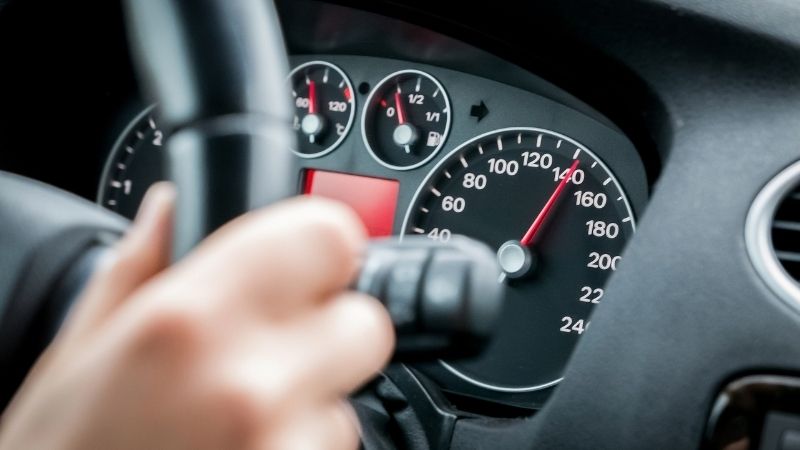Role
Industry
Solutions
Products
We’ve all had moments on the road we’re not proud of. Whether it’s going beyond the speed limit, cornering too fast, or slamming on the brakes when the road conditions change. What you may not realise at the time is the impact this harsh driving can have on fleets, both for an employee’s safety and the bottom line. We’ve outlined some of the various forms that harsh driving can take, and why tackling it should be a priority.
One of the major contributors to harsh driving is overspeeding. As the name implies, this is when employees significantly exceed a road’s posted speed limit. While all of us drift over the speed limit on occasion, it has to be understood that overspeeding is both a danger to employees and other road users and a cause of increased operating costs.

One thing to consider about speed limits is that they aren’t arbitrary. They are set based on a number of criteria such as the construction of the road, its characteristics, local weather conditions, and types of vehicles using the road. This means there are legitimate reasons for the posted speed limit; it’s there to keep all road users safe and to reduce the possibility of accidents. Going above the posted speed means drivers aren’t giving themselves the ability to safely react to road hazards, whether that’s sharp corners, pedestrians, schools, or entering traffic. This behaviour is incredibly risky and unnecessarily puts both the drivers and the general public in danger.
Another thing to consider is that speeding directly increases the likelihood of an accident. It increases the distance required to brake, it makes vehicles more difficult to manoeuvre, and increases the severity of any impact with other vehicles, pedestrians, and stationary objects. Reducing speed directly reduces both the chance and severity of an accident.
There’s also a direct impact to your organisation’s bottom line. Vehicles that speed consume more fuel. In fact, when travelling the same distance, a vehicle will consume 20% more fuel travelling at 120 km per hour than at 100 km per hour. That’s not an insignificant amount of money when multiplied across your fleet. Plus, there’s the additional wear and tear each vehicle will experience, especially if the driver accelerates harshly. And if your employees are involved in an accident, there’s the potential for your insurance premium increasing.
There’s more to harsh driving than just overspeeding. When a vehicle corners too quickly or the brakes are applied aggressively, there are several direct impacts to your organisation.
Harsh cornering occurs when a driver takes a corner too fast. This puts unnecessary strain on the vehicle, leading to additional wear and tear on tyres and brake pads. But more importantly, if the driver isn’t aware of the road conditions, there’s a chance harsh cornering could lead to even worse outcomes. If the corner was taken at high speed, the vehicle might roll, injuring the occupants and potentially other road users. Even if the vehicle doesn’t roll, taking a corner too fast can lead to a driver losing control of the vehicle entirely. This too could lead to an accident with other vehicles or road users.
One of the reasons Smarak’s solutions are so powerful is that they provide the opportunity for organisations to proactively manage harsh driving. By investing in a comprehensive telematics solution, you can benchmark and monitor how your employees are behaving while on the road. This is made possible due to hardware that includes accelerometers that detect sudden changes in movements. By capturing this data, you can run reports on how harshly each vehicle is being driven.
This means you can identify instances of harsh braking, cornering, acceleration, and where employees are travelling at excessive speeds. This can directly improve your bottom line by reducing fuel consumption and costly vehicle maintenance. It also helps to keep both your employees and other members of the public safe when using the road.
If you’re ready to start tackling harsh driving, get in touch below.